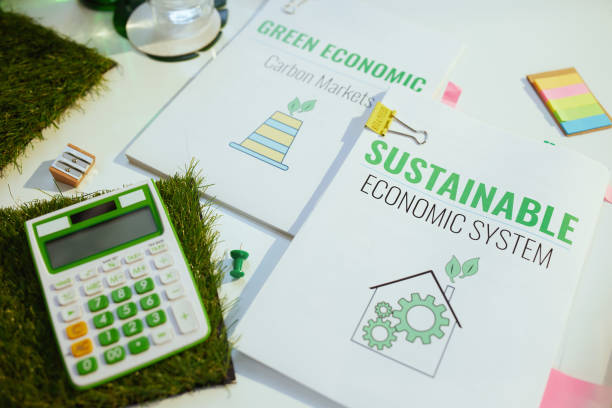Budgeting Tips
Comprehensive Budget Planning Strategies for Creating a Sustainable Financial Plan
Creating a sustainable financial plan requires more than just tracking income and expenses. It involves a holistic approach to budgeting that aligns with long-term goals, adapts to life changes, and ensures financial stability. Here’s a comprehensive guide to budget planning strategies that will help you create and maintain a robust and sustainable financial plan.
1. Assess Your Current Financial Situation
Why It’s Essential: Understanding your current financial status provides the foundation for effective budget planning.
Steps to Take:
- Calculate Net Worth: List all assets (savings, investments, property) and liabilities (debts, loans) to determine your net worth.
- Review Cash Flow: Analyze your income sources and spending patterns to gauge your cash flow.
Tools to Use:
- Financial Planning Software: Mint, Personal Capital
- Spreadsheets: Google Sheets or Excel for tracking assets, liabilities, and cash flow
2. Set Clear Financial Goals
Why It’s Essential: Defining specific, measurable, achievable, relevant, and time-bound (SMART) goals provides direction and motivation for your financial planning.
Types of Goals:
- Short-Term Goals: Immediate needs such as saving for a vacation or emergency fund.
- Medium-Term Goals: Objectives like buying a home or funding education.
- Long-Term Goals: Retirement planning and wealth accumulation.
How to Set Goals:
- Identify Priorities: Determine which goals are most important and need to be achieved first.
- Create Milestones: Break down large goals into smaller, manageable milestones.
Tools to Use:
- Goal-Setting Apps: Goal Tracker, Habitica
- Budgeting Software: YNAB (You Need A Budget), EveryDollar
3. Develop a Comprehensive Budget
Why It’s Essential: A well-structured budget helps you allocate your income effectively, control spending, and work towards your financial goals.
Budgeting Methods:
- Zero-Based Budgeting: Allocate every dollar of income to specific expenses or savings, ensuring that your budget balances to zero.
- 50/30/20 Rule: Divide your income into 50% for needs, 30% for wants, and 20% for savings and debt repayment.
- Envelope System: Use physical or digital envelopes to manage spending within various categories.
Steps to Create a Budget:
- Categorize Expenses: Include fixed expenses (rent, mortgage) and variable expenses (entertainment, dining out).
- Allocate Income: Distribute your income across different categories according to your budgeting method.
Tools to Use:
- Budgeting Apps: GoodBudget, PocketGuard
- Online Budgeting Tools: Budget calculators and templates
4. Implement Effective Savings Strategies
Why It’s Essential: Consistent saving is key to building financial security and achieving your financial goals.
Savings Strategies:
- Automate Savings: Set up automatic transfers to savings or investment accounts to ensure consistent contributions.
- Use High-Yield Accounts: Take advantage of high-yield savings accounts or money market accounts for better returns on savings.
Steps to Implement:
- Set Up Automatic Transfers: Schedule monthly transfers to savings accounts.
- Create an Emergency Fund: Aim to save 3-6 months’ worth of expenses.
Tools to Use:
- Savings Apps: Digit, Acorns
- High-Yield Savings Accounts: Online banks and credit unions
5. Manage and Reduce Debt
Why It’s Essential: Efficient debt management prevents high interest costs and improves overall financial health.
Debt Management Strategies:
- Snowball Method: Focus on paying off the smallest debts first while making minimum payments on others.
- Avalanche Method: Prioritize paying off debts with the highest interest rates first.
- Debt Consolidation: Combine multiple debts into a single loan with a lower interest rate.
Steps to Manage Debt:
- List All Debts: Document amounts, interest rates, and minimum payments.
- Create a Repayment Plan: Develop a strategy to systematically reduce and eliminate debt.
Tools to Use:
- Debt Repayment Calculators: Available on financial planning websites
- Debt Management Apps: Tally, Debt Payoff Planner
6. Plan for Retirement and Long-Term Investments
Why It’s Essential: Planning for retirement and long-term investments ensures financial security in the future.
Retirement Planning Strategies:
- Contribute to Retirement Accounts: Maximize contributions to accounts like 401(k)s, IRAs, or Roth IRAs.
- Diversify Investments: Build a diversified portfolio to spread risk and enhance potential returns.
Steps to Implement:
- Determine Retirement Needs: Estimate the amount needed for a comfortable retirement.
- Regularly Review Investments: Adjust your investment strategy based on performance and changing goals.
Tools to Use:
- Retirement Calculators: Available on financial planning websites
- Investment Apps: Robinhood, Betterment
7. Monitor and Adjust Your Budget Regularly
Why It’s Essential: Regular monitoring and adjustments ensure your budget remains relevant and effective.
How to Monitor:
- Track Spending: Use apps or spreadsheets to log expenses and compare them to your budget.
- Review Monthly: Assess your budget’s performance and make necessary adjustments.
Steps to Adjust:
- Identify Variances: Analyze discrepancies between budgeted and actual spending.
- Update Goals and Categories: Modify your budget to reflect changes in income, expenses, or goals.
Tools to Use:
- Expense Tracking Apps: Spendee, Wally
- Financial Reports: Generate reports through budgeting software
8. Invest in Financial Education
Why It’s Essential: Increasing your financial knowledge helps you make informed decisions and improve your budgeting and investment strategies.
Ways to Learn:
- Read Books: Books on personal finance, investing, and financial planning (e.g., “The Intelligent Investor” by Benjamin Graham).
- Take Courses: Online courses or workshops on budgeting, investing, and financial management.
Tools to Use:
- Educational Platforms: Coursera, Udemy
- Finance Blogs and Podcasts: The Motley Fool, NPR’s Planet Money
9. Develop a Sustainable Spending Plan
Why It’s Essential: A sustainable spending plan ensures that your spending aligns with your financial goals and values.
How to Develop:
- Prioritize Needs Over Wants: Focus on essential expenses and limit discretionary spending.
- Adopt Minimalism: Simplify your lifestyle to reduce unnecessary expenses and save more.
Steps to Implement:
- Create Spending Limits: Set limits for discretionary spending categories.
- Evaluate Purchases: Assess whether each purchase aligns with your values and goals.
Tools to Use:
- Spending Trackers: Apps and tools for monitoring and evaluating purchases
- Minimalism Resources: Books and blogs on minimalism and sustainable living
10. Review and Adjust Your Plan for Life Changes
Why It’s Essential: Life changes such as marriage, job changes, or having children can impact your financial situation and goals.
How to Adjust:
- Update Your Budget: Reflect changes in income, expenses, and financial goals in your budget.
- Plan for Major Life Events: Prepare financially for events such as buying a home, starting a family, or retirement.
Steps to Implement:
- Reassess Goals: Adjust financial goals based on new life circumstances.
- Seek Professional Advice: Consult with a financial advisor for personalized guidance.
Tools to Use:
- Financial Planning Apps: For updating and managing your financial plan
- Consultation Services: Financial advisors and planners
Conclusion
Creating a sustainable financial plan involves a combination of strategic budgeting, goal setting, and regular monitoring. By assessing your financial situation, setting clear goals, developing a comprehensive budget, managing debt, planning for retirement, and investing in your financial education, you can build a robust plan that enhances your financial health and achieves long-term success. Implement these comprehensive strategies to ensure a well-rounded and adaptable financial plan that meets your needs and aspirations.

